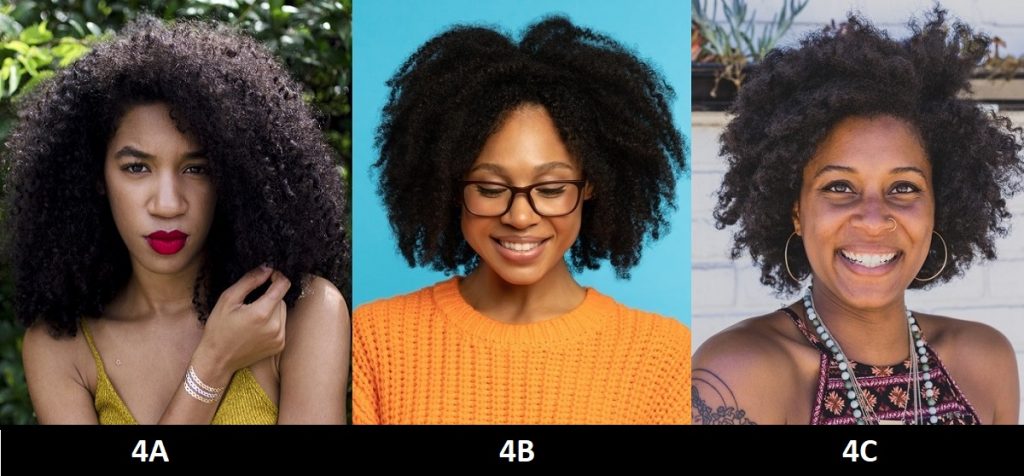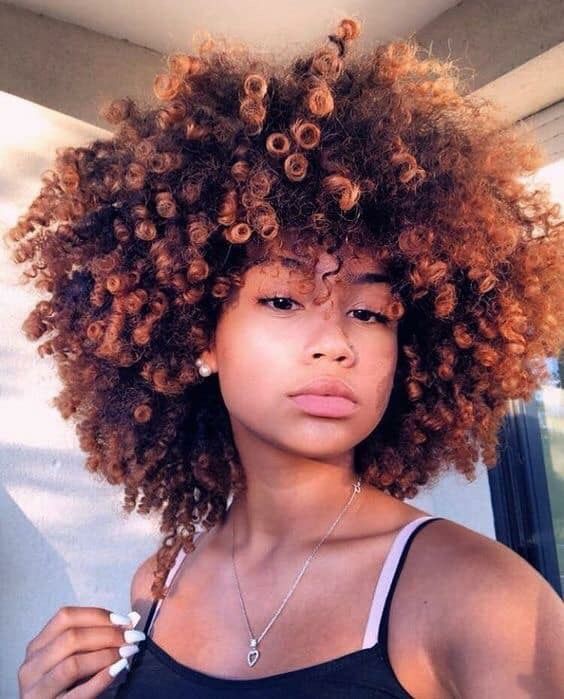Table Of Content

Finally, it’s important to note that you may have several different LOIS hair patterns on your head. When this occurs, the system allows you to combine LOIS letters to determine your hair pattern. Type 3C was created after Andre Walker released his hair typing system by a community member at NaturallyCurly.com.
Choosing Products Based on Porosity

Taking care of your hair is important, but it is also essential to maintain a healthy scalp. Gently massage your scalp with the shampoo in circular motions to remove dirt and stimulate blood flow to the scalp. ✔︎ Water is an excellent source of moisture, and adding it to your regular routine can help improve your coils’ health and appearance. Covering your hair during sleep is also perfect for extending the life of your protective styles. It’s also good to have a regular conditioner and a deep conditioning hair mask you use once a week.
How to Style 4A Hair
Although it has challenges, 4A hair has stunning, well-defined curls and striking volume. Once you learn the specifics of taking care of your coils, you’ll appreciate everything about your mane. A braid out is a simple and easy way of letting your curls and coils shine after you’ve unraveled a braided style. They can help enhance your natural pattern and give definition to your curls and coils for a chic look.
Is Hair Typing Real?
11 best curling wands, tongs and wavers for 2024 - Good Housekeeping uk
11 best curling wands, tongs and wavers for 2024.
Posted: Thu, 18 Apr 2024 07:00:00 GMT [source]
Unfortunately it also means that 4A strands are more easily damaged if you touch or brush them too often. If shrinkage is a major issue for you, look for products and styling techniques that help elongate your curls. After washing your hair, be sure to follow up with a cream-based leave-in conditioner for added moisture and conditioning. The fun thing about having 4A hair is that you have many styling options at your fingertips. The best styles are protective ones that you can wear for days, or even weeks, at a time. With protective styling, you’re reducing how much you handle your hair, which helps prevent damage and retain moisture.
Hairstyles to Fall In Love With This Season
But this isn’t a universal characteristic for everyone with 4a hair. It gets even more complicated when we get to the subtypes — determining if you have 4a hair becomes seemingly impossible. Here, Tamika Gibson, hairstylist, expert, and owner of The Hair Diagram and Bold Hold, explains everything you need to know about creating a haircare routine for 4A hair to thrive.
Sulfate-Free Shampoos and Clarifying Rinses
This wash schedule will help you ensure your hair stays clean without needlessly stripping away your natural scalp oils daily. You get the moisturizing benefits from your natural sebum and more time to enjoy your carefully styled curls in between shampoos. You could fall under one of the related hair types, depending on the size and circumference of your coils/curls and the overall texture.

This includes identifying your porosity, density, and, for many, your hair type. While all type 4 hair is tightly coiled, there are nuances when it comes to how to care for each specific subtype. Due to the naturally defined curls and their moisture retention capacity, wash n’ go hairstyles look great on women with 4A hair. To determine your hair type, wash it and let it air-dry without adding any products.
Though your hands and fingers can sometimes be great styling tools, you can touch your curly hair too much. Playing with your delicate curls can cause issues like breakage and frizz and can ruin your curl definition. Some of our favorite styles for 4A hair are wearing it down and loose (on wash day and for a day or two afterward), short-term protective styles, and high-volume ponytails. Coarse textured strands hold onto moisture more effectively than fine and medium textures, so you get additional moisturizing benefits when you wash less often. Coarse hair also takes longer to look greasy, so there’s no reason to wash coarse 4A hair more often than once a week.
Specifically for flat irons, use just enough heat to successfully straighten or curl your hair with one pass, using the chase method for best results. Porosity is explained with three levels — high, medium, and low. If you have high porosity hair, moisture easily slips out of the hair shaft because the cuticles are fully open. This would be considered "normal" and means that your hair can easily retain moisture.
1C hair is the coarsest and most textured form of straight hair. It remains straight but has more texture than straight hair types like 1A. For instance, 1A is pin-straight from root to tip and lacks body or volume. If your hair is entirely straight with some texture but without waves, it’s more likely 1C. Similarly, the 4D hair type was created within the natural hair community.
Hair porosity refers to how well hair can absorb and hold moisture, and it’s mostly determined by the structure of the cuticles in every strand. Density refers to the number of hair strands per square inch of the scalp. Let’s take a look at the most noticeable features of 4a hair to help you determine whether this is your hair type. In this article, we’ll help you figure out if this is your accurate hair type. Send your Q to for a chance to have it featured in a future installment of Hair Health Hotline.
As with all Type 4 hair, 4a hair tends to easily lose moisture in cooler weather when chilly temperatures can draw moisture out of your hair. Consider using protective headgear to keep your tresses covered. Even though conventional wisdom tells you that your hair is more fragile when wet, it's also more forgiving when you need to detangle stubborn knots. And if needed, use a good detangling spray or even a DIY one made from a simple mix of conditioner and water in a spray bottle. Apply a leave-in treatment to your entire head then add a few drops of hair serum to the ends for added shine and frizz control.
You can do so by keeping to the regular wash day detailed above, which allows you to cleanse your scalp and hair follicles of any dirt, sebum, and product buildup. Also, use leave-in products with coconut oil or shea butter, which act as moisturizers and sealants to prevent loss of moisture. Hair texture and porosity may vary from person to person, but everyone with 4a hair should see a similar pattern and shape in their locks.
But your curls are easily damaged, so try and minimize manipulation, especially if you want to grow your 4A locks. 4A hair needs plenty of moisture daily to prevent it from drying out. The easiest way to do this is to spray your hair and scalp lightly with clean water and then use your favorite hair oil to help your hair retain moisture. Argan oil, avocado oil, or Jamaican black castor oil work well, but don’t overload your curls. 4B hair strand has a sharp angle that can make it difficult for sebum to fully cover the fiber, resulting in a lack of moisture that can result in dryness and frizziness.
By keeping up with a cleansing routine, you’ll make sure your scalp stays refreshed, which naturally encourages hair growth. If your hair type is 4A, then your hair is fine and soft but extremely kinky. Each 4 hair type is similar to these characteristics, but certain qualities make them all unique. A good leave-in product can do wonders for boosting your hair's moisture balance. This one is a conditioner that can be used on your hair whether it's straight or curly.
Look for conditioners formulated with natural botanical ingredients and make sure they’re rich in emollients like shea butter, coconut oil, or argan oil. What's cuter than a pair of mini buns on either side of your part? Coat your 4a hair in a hydrating cream or gel to really define your curl pattern and enhance your nice. This conditioner is free from harsh ingredients like preservatives and sulfates and is vegan-friendly. It combines extracts, herbs, and oils sourced from India such as amla, bhringraj, and shikakai to help soften and nourish your hair without weighing it down. Best of all, this pick can improve your hair's elasticity and is ideal to use even if you have hard water.

No comments:
Post a Comment